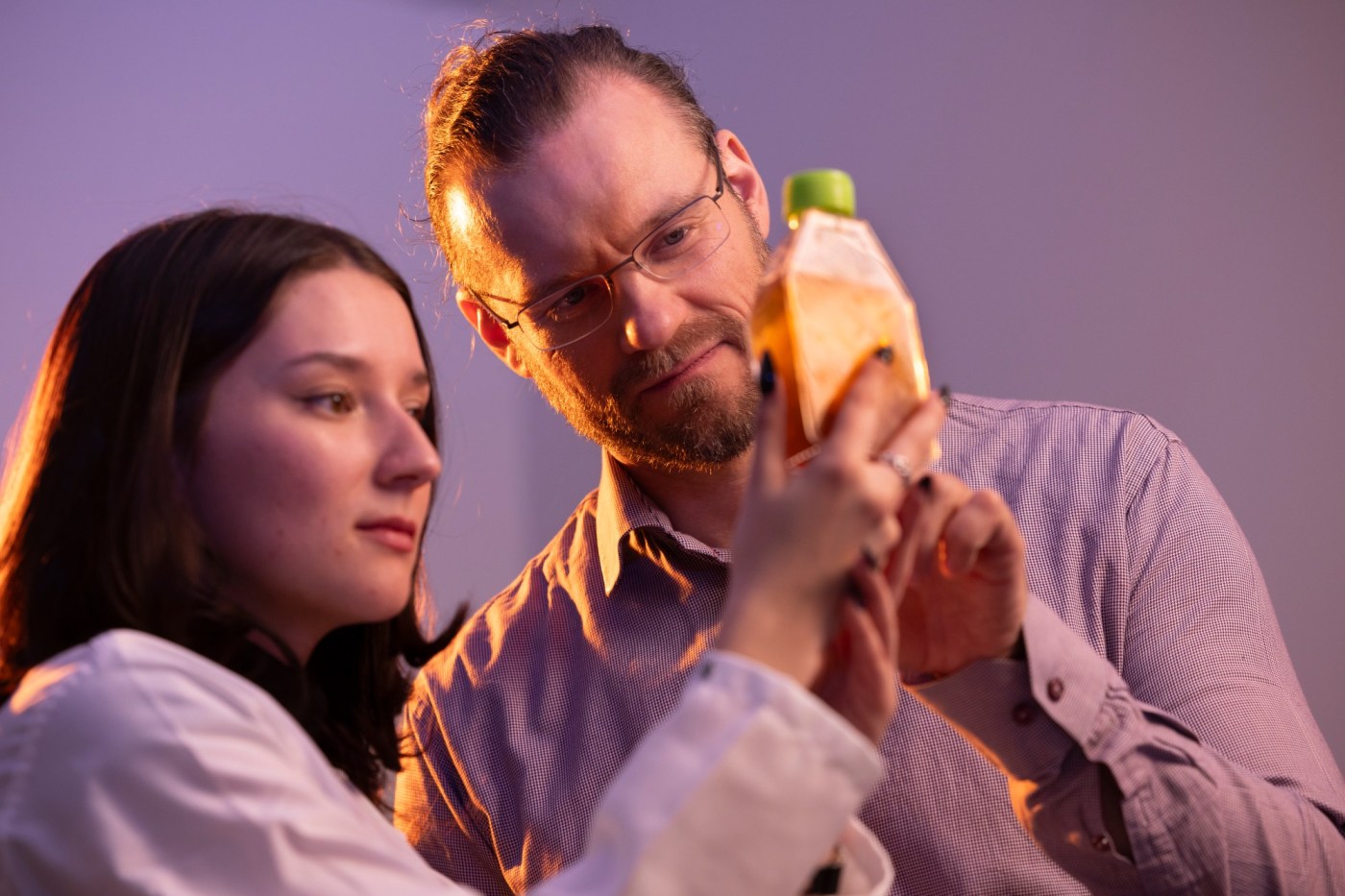Each week, Cal State Fullerton physics and philosophy student Ashley Robinson spends time in the campus lab studying millimeter-long vinegar eelworms under the microscope. These tiny nematodes have a unique behavior in that they can synchronize their body movements and perform in collective motion.
Similar to a school of fish or flock of birds, this characteristic allows the eelworms to create movement and generate force to push fluids and objects many times their own weight.
Robinson is part of a team of Titan students conducting research on vinegar eelworms under the guidance of CSUF assistant professor of physics Anton Peshkov. The work is funded by a $375,000 grant from the National Science Foundation.
When Robinson began at CSUF her freshman year, she intended to major in biology with the goal of becoming a veterinarian. But after taking a first-year physics class, she became inspired and switched her major to physics. Now in her junior year, she has spent more than two years working alongside Peshkov and the team to learn more about these nematodes.
“What I do with my research is I’ll replicate the condition of confinement that’s necessary for that collective motion,” Robinson said. “I basically work by using 3D objects that I design around that, and I will manipulate the area of confinement and the angle of confinement so that I can direct them in specific ways to perform collective motion.”
Discovered in the 1600s, these tiny roundworms, or turbatrix aceti, are most commonly found in unfiltered vinegar or other fermented fluids. They thrive in acidic environments, feeding on the natural bacteria and yeast produced during fermentation. In today’s food products like commercial vinegar or wine, they are generally removed through filtration and pasteurization.
Peshkov brought his passion for studying vinegar eelworms with him to CSUF. Originally from Moscow, and having studied in Paris, he began researching the eelworms in 2020 while doing postdoctoral work at the University of Rochester. After he arrived on campus in 2022, he applied for and was awarded the three-year grant that has allowed him to continue this exploration of active matter in physics.
“I’m not a biologist, I’m a physicist, so we study this from the point of view of physics,” Peshkov said. “We look at how they can organize themselves to move in the same direction or have the same oscillation.”

Peshkov initiated the research, and aside from collaborating with a small group in San Diego, few others are working in the field. He hopes to take this study of collective motion and use it to inform future applications in disciplines such as robotics and health care. He intends to publish several findings from the study soon.
“I think we already have some very interesting results and hope to be able to publish,” Peshkov said. “If we have good results, we can maybe continue the research of this topic.”
Robinson’s contribution to the project focuses on generating on-demand fluid flows and tracking the ability of the vinegar eelworms to move objects suspended in the liquid. It is research that is in many ways the first of its kind.
“Soft matter physics, or the kind of physics that I’m studying, is still relatively understudied, so understanding active matter systems, which would include the nematodes, is still very fresh in the field of physics,” Robinson said.
As a double major in physics and philosophy, Robinson sees her two interests as both compatible and complementary. She draws from each field to expand her understanding and approach to complex problems.
“Philosophy helps to get me to ask the questions, and physics gives me the tools to be able to answer them,” Robinson said.
A first-generation college student, Robinson acknowledges the unique opportunity she has been given to be involved in such groundbreaking research as an undergraduate. To date, she has received more than $13,000 in scholarship awards from both the California State University STEM-NET Summer Student Research program and the Dan Black Family Fellowship.
“The really good thing about Cal State Fullerton is they make research and getting research experience very available to their students,” Robinson said.
Her future plans include pursuing a master’s program at CSUF, and given her involvement in Peshkov’s vinegar eelworm research, Robinson hopes to continue the work for the foreseeable future.
“I am pretty inspired by how niche of a topic this is and how far you can really take it,” Robinson said. “I still have a lot of ways that I would love to be a part of (the research) in terms of exploring their capabilities. … The progress that we’ve made is going to be the backbone for being able to make certain advancements toward getting a better understanding of active matter systems.”
